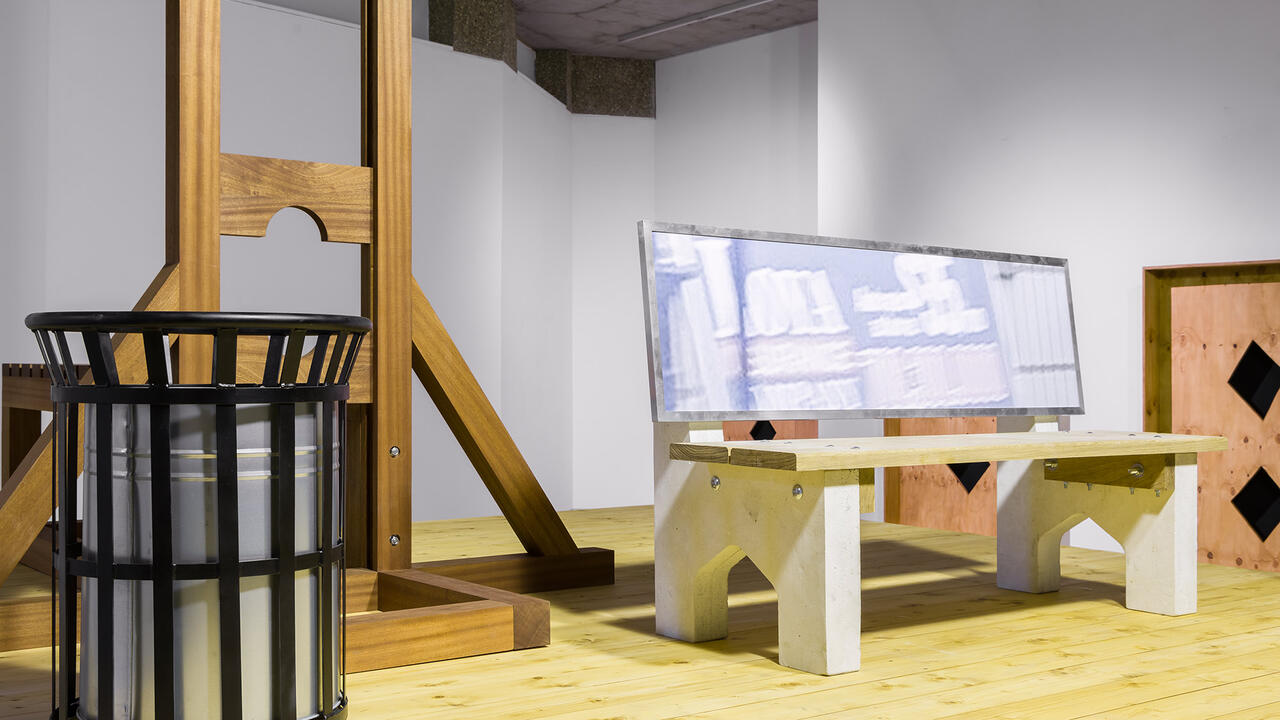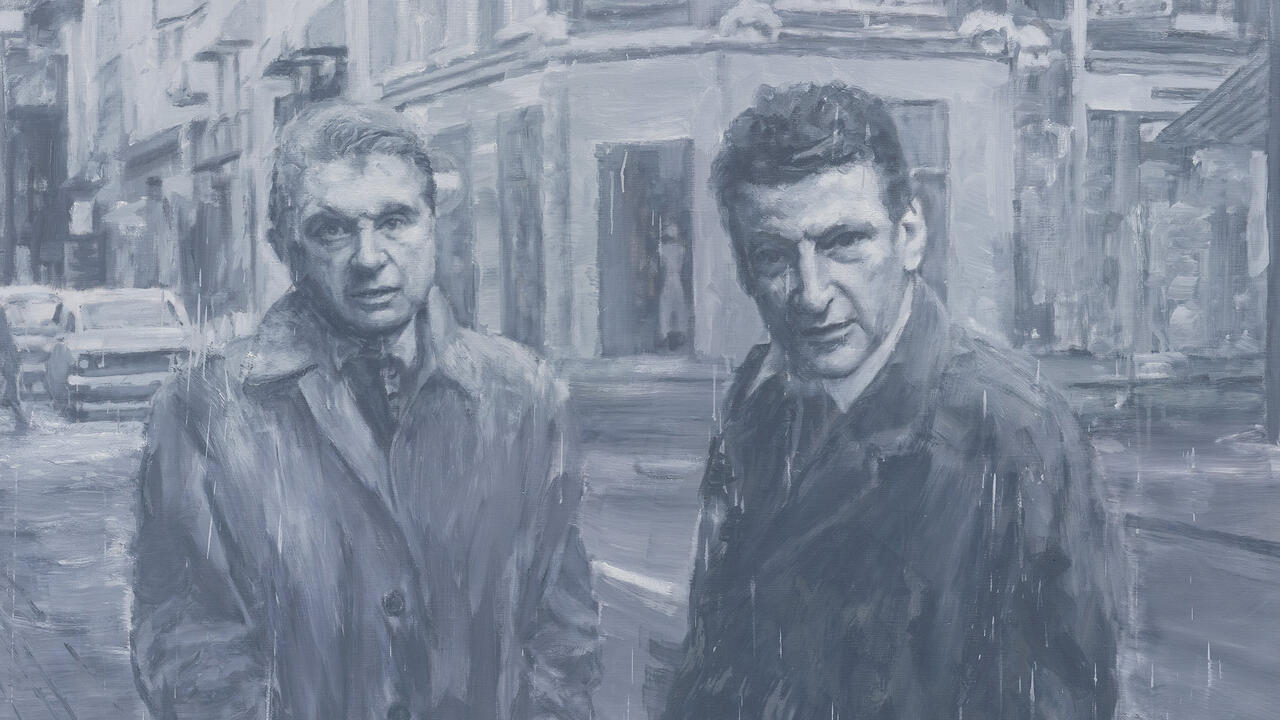A Turkish Video Artist and Activist Asks: How Do You Make a Story Disappear?
Two London exhibitions by belit sağ address police and military violence committed against Kurdish people in Turkey
Two London exhibitions by belit sağ address police and military violence committed against Kurdish people in Turkey

How often does a lie need to be repeated for it to be accepted as truth? How many times do you need to voice a hope for it to appear possible? Can an image erase another image? How can you make people doubt their own memories? How do you make a story disappear?
Such questions hover over the work of Turkish video artist and activist belit sağ shown in two linked London exhibitions addressing police and military violence committed against Kurdish people in the south east of Turkey. Through snappily edited footage, sağ suggests both the immediate impact of violence – damaged buildings; injured children; widows holding portraits of the dead – and its long tail, as she chases fugitive images and stories through various layers of obfuscations and censorship.

The centrepiece of the artist’s show at LUX, Ayhan and me (2016), was first commissioned for Akbank Sanat – a bank-backed arts centre in Istanbul – and details the censorship experienced by the artist in creating the work itself. sağ had proposed a video about Ayhan Çarkın, a former special police operative who had publicly confessed to (and repented) 1,000 extrajudicial killings in Kurdish regions of Turkey during the 1990s. The artist is informed that the political situation in Turkey makes it impossible to show such a work in Istanbul, so instead sağ charts her negotiations with Akbank Sanat and its censors, while exploring the fight to control the circulation of images relating to the conflict online.
Should we see photographs and films of violence as important acts of witnessing, or as a kind of pornography, sağ wonders? Have we become over-reliant on photographic documentation, no longer believing reports of violence unless images exist of it? She shows photographs of a Kurdish man called Hacı Lokman Birlik, put online by his family. Pictured in sunshine against mountain scenery, they were circulated as counter images to viral footage of Birlik’s body being dragged behind a police car through the streets of Sirnak in 2015, as if the photographs of the man smiling could erase the memory of his body being brutalized.

Installed between banks of sandbags at PEER, the video Sept – Oct. 2015 Cizre (2015) finds sağ among a group of women and children in an embattled town near the Syrian and Iraqi borders. She is a gentle documentarian, passing her camera around for others to use, answering questions unguardedly and filming women and children alike scrolling through photographs of bomb and bullet damage on their phone screens as they tell their stories. In the corner of the sitting room, a television broadcasts news of a peace protest bombed in the capital city of Ankara (the death toll would eventually rise to 109). A jaunty video showing Kurdish forces undergoing military training beams up. One of the women proudly identifies a trainee on screen as her neighbour’s daughter.
The relationship between events on and off the screen is explored further in disruption (2016). Moored by a scene from Woody Allen’s The Purple Rose of Cairo (1985) in which Jeff Daniels’s character steps off a cinema screen into the real world, we are offered glimpses of television broadcasts that are disrupted to become the sites of unfolding news. During the final televised speech of the Romanian dictator Nicolae Ceaușescu in 1991, the crowd erupts into a riot that will eventually topple him. Broadcasters from Turkish news stations during the attempted military coup of 2016 find themselves under threat, and fight to keep their cameras rolling.

Post Laure Prouvost, the vogue among female video artists for cutely whispery voice-overs and footage of their own hands has become irksome. Such suggestions of intimacy in sağ’s case have rather different motors: the threat of censorship is real; the images she is handling are unstable and prone to disappear; the question of whom she might trust is pressing. Throughout these videos, sağ cuts rapidly between faces and scenes, never allowing us to forget that a person is controlling what we are and aren’t allowed to see. Her presence on screen is a reminder of authorship.
Ayhan and me opens with an early 16th century engraving by Nicoletto da Modena – The Fate of the Evil Tongue (c.1507) – showing a group of solemn cherubs beating a severed tongue like iron on an anvil. ‘The mouth of the righteous brings forth wisdom, but the perverse tongue will be cut out’ says the Book of Proverbs. Rather than leaping to join in the punishment, sağ suggests, we should turn to examine the unseen forces dictating what we accept as righteous, and what perverse. And why.
belit sağ, ‘the image unseen, the image invisible, the image not shown’, is on view at PEER, London, until 26 January 2019
BL CK B X: belit sağ, is on view at LUX, London, until 22 December 2018
Main image: belit sağ, Sept – Oct. 2015 Cizre, 2015, film still. Courtesy: the artist and PEER, London























